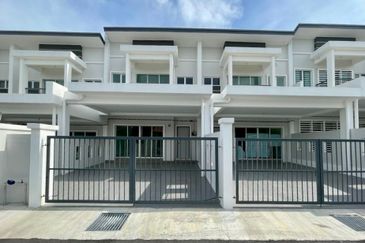KUALA LUMPUR (July 14): Bank Negara Malaysia’s unexpected move to cut the overnight policy rate (OPR) by 25 basis points (bps) to 3% yesterday is not enough to revive property sales, according to TA Securities Research.
In a note to investors today, TA Securities analyst Thiam Chiann Wen explained the last time Bank Negara increased the OPR in July 2014 whereby the rate rose by 25bps to 3.25%, the average lending rate was relatively stable back then.
“With the new Base Rate (BR) framework which came into effect on Jan 2, 2015, whereby interest rates are determined by the banks’ benchmark cost of funds and Statutory Reserve Requirement (SRR), as well as other components of loan pricing, we expect the adjustment to banks’ effective lending rates could be lesser,” she said.
Therefore, according to her sensitivity analysis, a 25bps cut in lending rate will decrease monthly repayment of a 30-year loan by 2.9%.
“Nevertheless, we believe a 2.9% decrease in monthly repayment alone is insufficient to convince consumers to commit to big ticket purchase,” Thiam said.
In view of the challenging macro environment, she opines consumers may prefer to hold more financial buffers for living expenses and to protect themselves against rising costs and unexpected adverse events.
Thiam also pointed out that the demand for houses was unperturbed by interest rate hikes during 2010-2013 period.
“The robust demand was largely fuelled by easy homeownership scheme with low initial capital outlay,” she said, adding that demand started to ease only after the government introduced a series of cooling measures to calm runaway home prices.
“Coupled with banks’ tightening lending policies, residential loans applications dwindled, despite average lending rates staying accommodative at around 4.45% to 4.75%,” she said.
Given that the weak consumer sentiment and stringent lending practice are the key dampeners to property sales, Thiam reiterated her view that the loosening monetary policy alone is unlikely to revive the overall housing market. Also, a cut in OPR may not change the banks’ prudent stance on loans approvals.
“With that, we believe the 25bps rate cut will not boost property sales significantly,” she said.
However, Thiam said the research house would change its view, if a combination of easing policies are introduced such as further OPR cuts, additional reduction in SRR, and reinstatement of property cooling measures (such as the developer interest bearing scheme, removal of the 70% Loan to Value Cap on third property and lower real property gain tax).
“At this juncture, our economist views that BNM will maintain the current OPR at 3.00% throughout the year,” she noted.
Therefore, Thiam maintained earnings forecasts, target prices and recommendations for all the developers under TA Research’s coverage.
“The current weak consumer sentiment and less-friendly mortgage packages are expected to weigh on property sales for 2016,” she said.
Thiam mentioned that property sector is not trading at 9.9 times earnings per share and 0.8 times book value per share for calendar year 2017, this compares to historical average price-to-earnings ratio of 12.2 times and price-to-book value of 1.4 times.
“We view the current discounted valuation as a reflection of the deteriorating fundamentals of the overall property sector. Reiterate Underweight on the property sector,” she recommended.
Thiam said the key risk to her recommendation are more positive monetary and fiscal policies; and significant economic improvement which leads to strong recovery in property sales. — theedgemarkets.com
Try out one of our super tools, the rental yield calculator, here.
TOP PICKS BY EDGEPROP

Armani Kajang Industrial Park
Kajang, Selangor

Kuala Terengganu Golf Resort
Kuala Terengganu, Terengganu

Seasons Garden Residences
Wangsa Maju, Kuala Lumpur

Bandar Baru Permas Jaya
Permas Jaya/Senibong, Johor





















